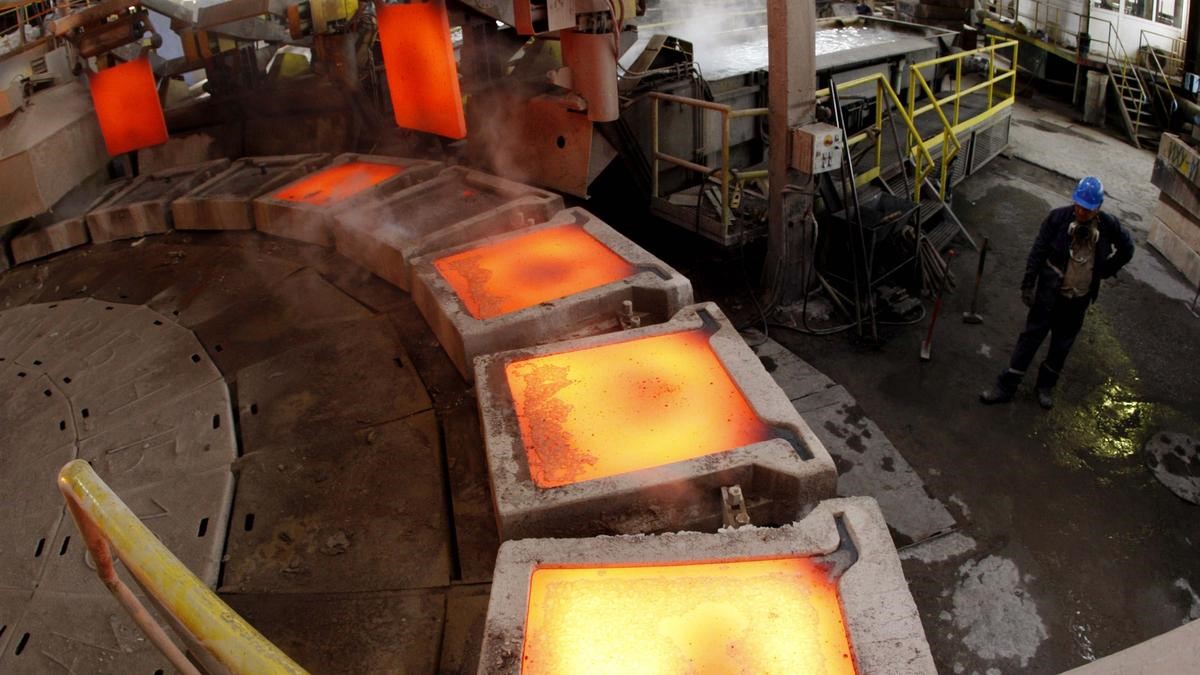Description

Source: HINDU
Disclaimer: Copyright infringement not intended.
Context
- Recent research has uncovered an unexpected behavior of copper under extreme strain rates, significantly altering its hardness.
- This discovery, detailed in a study by researchers from MIT and Northwestern University, suggests potential applications in high-speed manufacturing and aerospace engineering.
Details
- The study demonstrates that pure copper, when subjected to extreme strain rates while heated, exhibits hardness comparable to that of steel.
- This phenomenon is attributed to novel strengthening mechanisms activated under such conditions.
- At higher temperatures and strain rates, the copper substrate exhibited decreased crater depth and width, indicating increased hardness.
Mechanisms of Strength
The researchers identified three primary sources of strength in copper under extreme strain rates:
- Drag-Strengthening:Interactions between dislocations and atomic vibrations within the lattice.
- Thermal Strength:The kinetic energy of atoms suppresses certain defects.
- Athermal Strength:Barriers to dislocation unrelated to atomic kinetic energy, such as grain boundaries.
- As strain rate increased to 10 million /s, drag-strengthening became the dominant mechanism, enhancing overall strength despite reductions in thermal and athermal contributions.
Implications
The findings suggest that copper can be engineered for high-performance applications by exploiting its behavior under extreme strain rates. Potential applications include:
- High-Speed Manufacturing:Tools and components that endure high strain rates and temperatures.
- Aerospace Engineering:Structural materials for aircraft and spacecraft exposed to extreme conditions.

About Copper
- Copper is a reddish-brown metal with high thermal and electrical conductivity, widely used in various industries due to its properties and versatility.
- Ancient Use:One of the first metals used by humans; integral to the Bronze Age.
- Cultural Symbolism:Represents wealth and status in various cultures.
- It has a face-centered cubic crystal structure, which allows for easy movement of electrons, facilitating efficient heat and electrical transmission.
Physical Properties:
- Atomic Number:29
- Atomic Mass:546 u
- Density:96 g/cm³
- Melting Point:1,085°C (1,984°F)
- Boiling Point:2,562°C (4,644°F)
- Electrical Conductivity:Excellent, second only to silver
- Thermal Conductivity:High
Chemical Properties:
- Reactivity:Moderately reactive, forms a green patina (copper carbonate) when exposed to air.
- Corrosion Resistance:Good, forms a protective layer of copper oxide.
- Alloys:Easily forms alloys such as bronze (copper and tin) and brass (copper and zinc).
Occurrence and Extraction:
Natural Occurrence:
- Copper is often found in ore form, combined with other elements such as sulfur and iron.
- Common copper-bearing minerals include chalcopyrite (CuFeS₂), bornite (Cu₅FeS₄), malachite (Cu₂CO₃(OH)₂), and azurite (Cu₃(CO₃)₂(OH)₂).
- Significant deposits in the United States, Chile, Zambia, Russia, and Canada.
Extraction Methods:
- Mining:Copper ores are extracted through surface (open-pit) or underground mining techniques, depending on the ore depth and geography.
- Concentration:The mined ore is crushed and ground into a fine powder, and then subjected to froth flotation. This process separates copper minerals from the waste rock.
- Smelting:The concentrated ore is heated in a furnace to a high temperature, causing the copper sulfides to decompose into copper and sulfur dioxide gas.
- Electrorefining:The impure copper is cast into anodes and refined electrolytically. Pure copper is deposited on cathodes, while impurities settle as anode slimes or sludge.
Applications:
- Electrical and Electronics:Copper's unparalleled electrical conductivity makes it the material of choice for electrical wiring, motor windings, and electromagnetic coils. In electronics, it is used in PCBs, connectors, and integrated circuits.
- Construction:In building construction, copper’s durability and corrosion resistance make it ideal for plumbing, roofing, and cladding. Industrial machinery often uses copper for heat exchangers and hydraulic tubing.
- Transportation:The transportation industry relies on copper for automotive wiring, electric vehicle components, and maritime applications. Copper’s conductivity and ductility are crucial for creating efficient and reliable electrical systems.
- Healthcare:Copper's antimicrobial properties are utilized in medical devices and hospital surfaces to reduce the spread of infections. Copper is also used in intrauterine devices (IUDs) for contraception due to its spermicidal effect.
- Other Uses:Copper's aesthetic appeal and workability have made it a popular material for coins, jewelry, and artistic works. It also plays a role in renewable energy technologies, such as photovoltaic cells in solar panels and wind turbine generators.
Economic Importance:
- Major Producers:Chile, China, Peru, United States, and Congo.
- Market Dynamics:Influenced by industrial demand, technological advancements, and geopolitical factors.
- Price Trends:Prone to fluctuations based on supply-demand balance and global economic conditions.
Environmental and Health Aspects:
Environmental Impact:
- Mining activities can lead to habitat destruction and pollution
- Efforts to reduce environmental impact through sustainable practices
Health Impacts:
- Essential trace element for human health
- Overexposure can lead to toxicity, causing liver and kidney damage
Recycling and Sustainability:
- Recycling Rate:High due to the metal's value and ability to retain properties after recycling
- Sustainable Practices:Advances in green mining technologies and eco-friendly processing methods
Sources:
HINDU
|
PRACTICE QUESTION
Q. Consider the following statements regarding copper:
- Copper has the second highest electrical conductivity among all metals, after silver.
- Copper can form alloys with both zinc and tin.
- Chile is the largest producer of copper in the world.
Which of the above statements are correct?
a. 1 and 2 only
b. 1 and 3 only
c. 2 and 3 only
d. 1, 2, and 3
Answer: d
|
















